Do woodworkers need the Furniture Society?

This year's Furniture Society Conference included the raucous and popular Strut Your Stuff evening session, where attendees had a chance to put their slides in the carousel and get instant feedback from the crowd.
I recently attended my fourth Furniture Society conference, and as usual I left full of new ideas and inspiration, itching to get back out into my shop and be creative. But attendance was down significantly (below 400), and so is overall membership (below 1,000), and all of that can’t be pinned on a bad economy.
Frankly, I’m not surprised at the falloff.
I’ll give you my take. But I’d like to hear yours. What would convince you to join the group? Where should the group focus its efforts going forward? Let me know, and I’ll pass your thoughts along to the board. I might even join one of the group’s boards or committees and become your advocate there.
Here’s my take. I won’t pull punches. There are two basic types of furnituremakers: those who feel more comfortable building than designing, and prefer to copy or at least near-copy pieces they see in magazines and books; the other group likes building and problem-solving, too, but they want to design their own pieces. As the second type of woodworker, and one who is touched mostly deeply by contemporary designs, I have always had high hopes for the Furniture Society. And I’ve always enjoyed their annual conferences, being lucky enough to attend. The events offer a nourishing mix of high-end how-to and deep dives into the nature of our art and craft.
But the Society has always seemed schizophrenic to me, toggling between a longing for full membership in the art world and the fact that most members are woodworkers, people who don’t need to categorize what they do (art or craft!?), but just love to design and build beautiful furniture. Unfortunately (says me), the Society has favored the former group–unfortunate because the Society’s potential for growth lies with the latter group.
Here’s why: Furniture academics are few, and Masters students in the field of design come and go, but from our readership surveys at Fine Woodworking, I know there are at least 50,000 furniture-makers out there who favor contemporary design, preferring to attempt original work or at least re-interpret the classics in a significant way, as opposed to copying them. I can also estimate that at least 10% of that group make furniture for a living.
Also, if makers aren’t at the center, then who are the stars, who are the thought leaders? Academics and their students are full of ideas, and unencumbered by financial concerns they are able to challenge convention in a very important way. But I want to hear fom the Picassos and Monets out there, those whose work has struck a chord with people, those who have found a way to make a living. I want to know how they find inspiration, refine their designs, market their work. Like many serious woodworkers, I dream about being able to get paid for my art/craft, so I can devote more time to it, and the successful makers know how to do that.
There is a home for the most passionate fans of period furniture: It’s called the Society of American Period Furniture Makers (SAPFM), and their name tells you all you need to know about them. They welcome academics, grad students, and antiques experts, but makers form the heart and soul of the group. You can also tell a lot about the two groups (SAPFM and The Furniture Society) from their publications.
SAPFM holds annual events, like the Furniture Society, but they realize not all members can attend, so they also produce publications and resources for their members, the main one being a glossy quarterly that focuses mostly on techniques. Makers need techniques. Members also have access to an array of furniture plans online. Reproduction makers need plans. You have to know who you are, and SAPFM does.
The Furniture Society has one annual publication, and only new members get it for free. It focuses mostly on the academic and art-based seminars at the annual conference. That gives it a small audience, and sure enough the Society is sitting on stacks of these past annuals, unsold. Instead of, for example, creating a design book, full of pictures of members’ best furniture, creating a sourcebook for potential buyers such as interior designers, and giving members fresh ideas and inspiration, the readers of Furniture Studio get mostly text, largely academic and stuffy.
If I ran the zoo, those essays and reports would go on the Web site, where they can find their small audience, and the annual publications would be design books, with some business advice mixed in from the Society’s many successful studio furniture makers. And I’d give it away to all members, and to any designers who ask for them.
What do you think? Check out the membership benefits on the Furniture Society’s Web site. Like all small non-profits, they have a very tight budget, so try to keep your ideas cost-effective.
Fine Woodworking magazine has a broad audience to keep happy, and we can’t focus solely on modern furniture, but The Furniture Society can. What can they do to become an organization that you want to join?

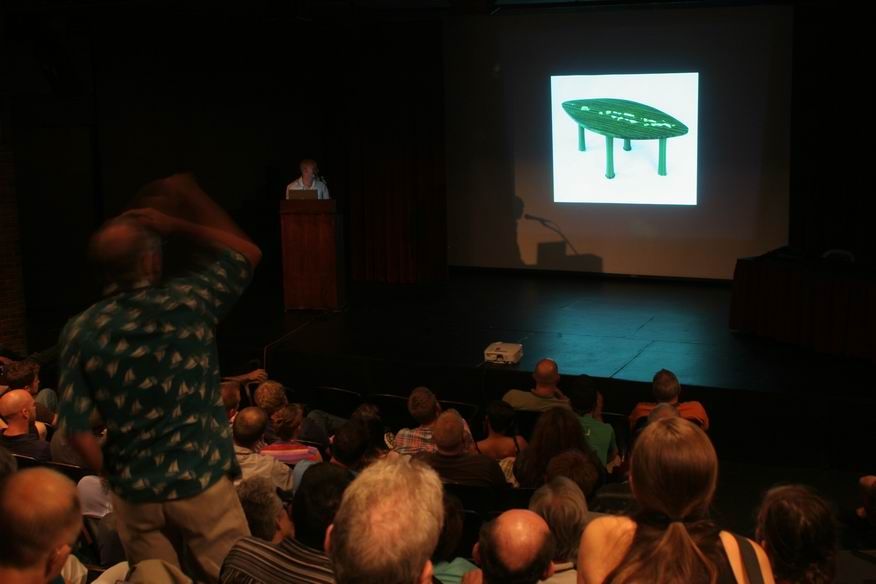
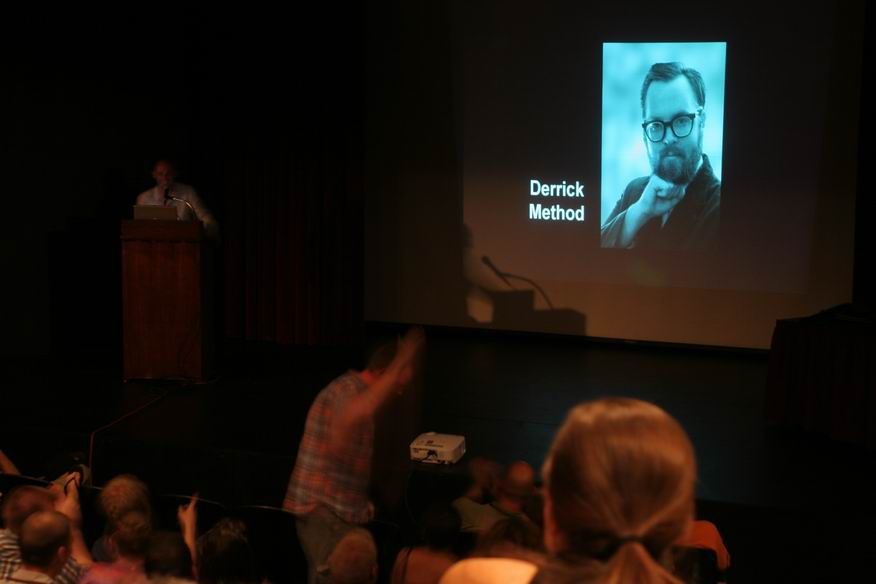
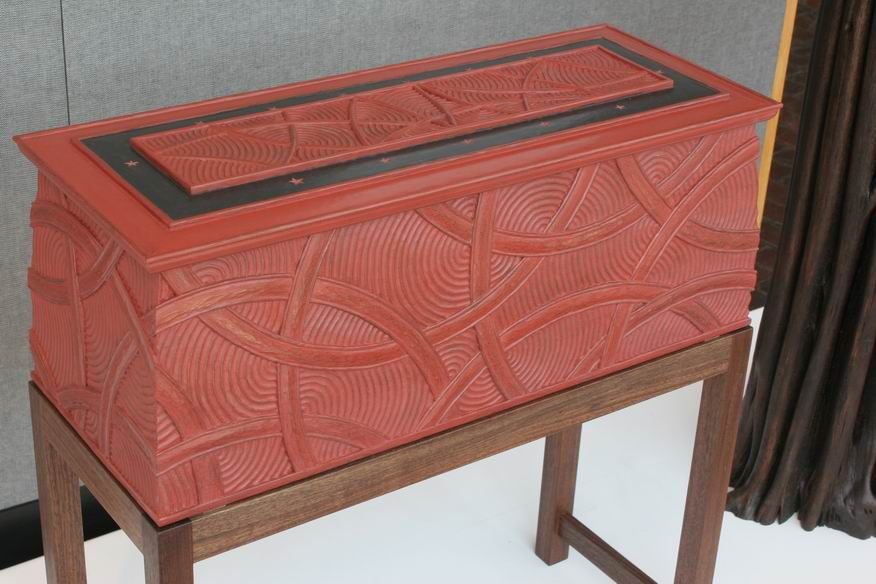
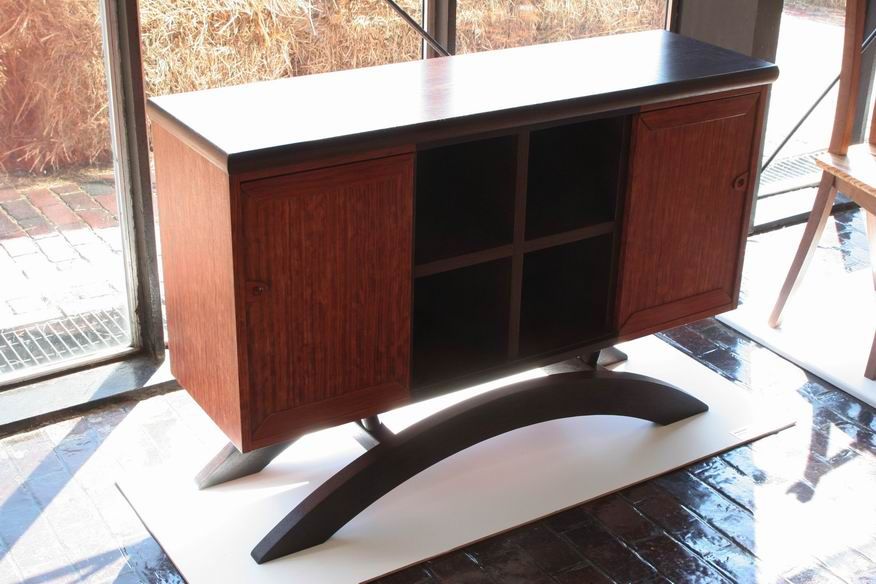
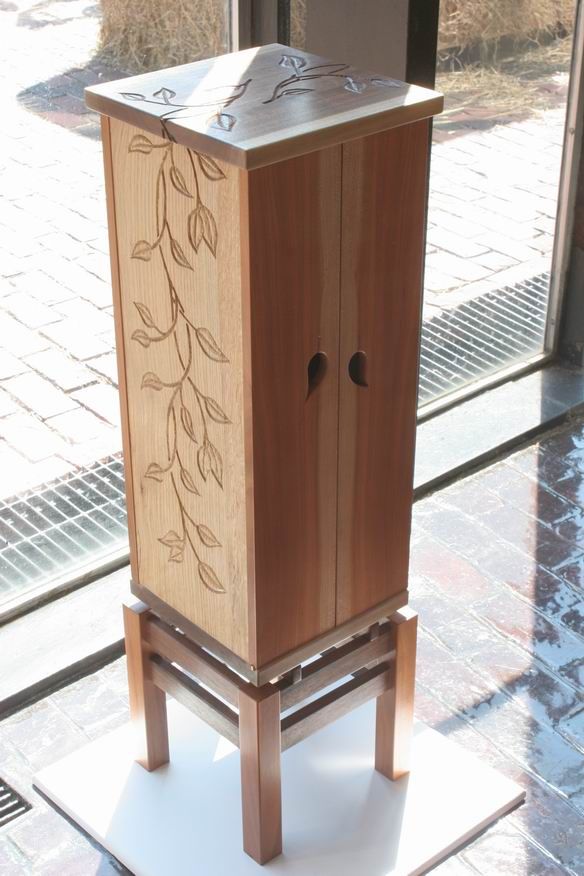
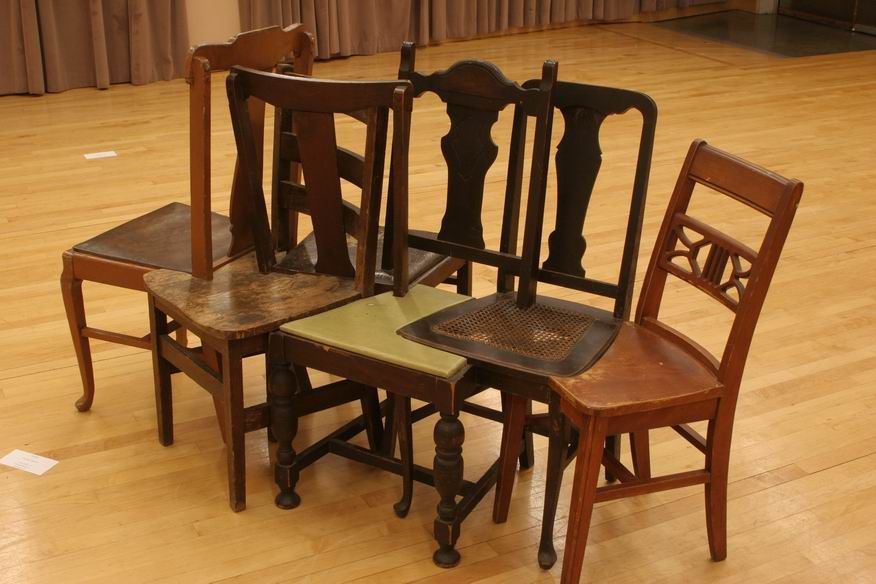


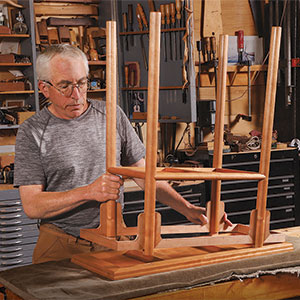
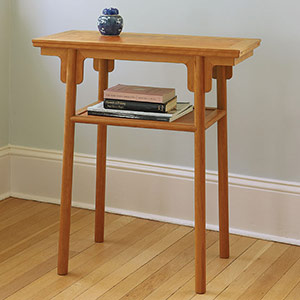
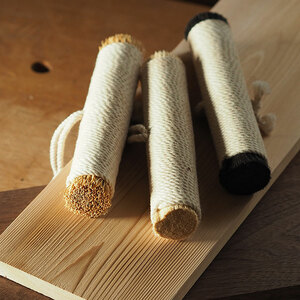
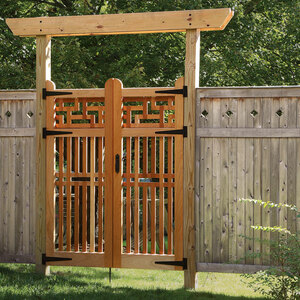











Comments
Hello Asa,
As always, it was great to see you at the Furniture Society Conference, and thanks for blogging about it. While I could answer your question as the President of the Board, I think it might be more insightful simply to answer as a maker and a sole proprietor of my own shop. I designs and build custom, sculptural furniture, and I’ve been doing this full time since ’84, and was doing renovation and remodeling before that, starting in ‘78. I have had my ups and downs like everyone else. And I have been a Fine Woodworking subscriber right from the first issue. In the beginning, FWW filled a real void for me, putting me in touch with images and articles that helped to expand my horizons and sensibilities. I remember well the furor and excitement that Garry Bennett’s “Nail Cabinet” made way back in ’80. In a way, this dialogue set the stage for me. It made me realize that there were a lot of folks out there to talk with about what I was doing, and what I thought about my work. But I was hesitant to find this community.
My own work matured slowly, as I was working in a vacuum, with no critique except when pieces were either rejected (mostly) or accepted (sometimes) for an exhibition. I realized when I turned 45 that while the reproduction pieces that I had been doing were great teachers of methodology, proportion and scale, it was time to seek my own voice, style and vocabulary. But I shunned the schools and institutions. I stayed away from the conferences and summer workshops. I wanted no part in the academic scene, where people talk about art (or craft, or whatever) rather than doing it. Nor did I want to gawk at the Famous Few, our handful of furniture heroes. Their work was one thing, but I thought I wouldn’t like their attitudes.
In 1998 asked me to go with him to a Furniture Society Conference in San Francisco. I really didn’t want to go, but he is someone I respect and enjoy, so I said OK. I have to admit that I had way more fun, and learned more that I could possibly have imagined. And the egos and attitudes that I expected to encounter where nowhere to be found. This was a group that had fun! We talked and listened, we shared and learned. Rather than costing me to belong and attend, it pays. I realized a long time ago that my involvement helps my work and my business immeasurably. These are the shop mates I do not have, the business partners that I need to make my little operation pay, and the program teachers that show me better methods and more interesting designs.
There is a great deal to be said for face-to-face interactions. These relationships go where no in-print vehicle can go. And I am not a blogger or on-line chat person, as I type with two fingers and really don’t have the time for it. I do best with conversation over a cup of coffee or a phone call if I must. I still get Fine Woodworking, and I read it most of the time (although I always look at the pictures). I love seeing my friends in the magazine. I know them through the FS. The two together are a fine way to learn, to grow and to communicate.
So to answer your question, do we need the Furniture Society, I say emphatically yes. It picks up where FWW leaves off, and it does it with great success. Whether it’s business practices, technical demonstrations, panel presentations, or the more academic presentations, I gain immeasurably from my involvement, friendships and conference attendance. It is hard for me to think about where I’d be without it. I certainly would not know you, or any of the other great magazine and publishing people. And my live and work would be the poorer for the lack.
Best. Andy
Andy Glantz
Zenith Design
Scottsdale, AZ
Hi Asa,
It’s great to hear that you enjoyed the conference and left “renewed and full of ideas.” Thanks for your take on things, it’s through exactly this kind of feedback that we’ve developed the Strategic Plan that guides our current programs and future goals. As a largely volunteer organization, it’s our membership that helps to define and dictate where we go and what we do, and allows us to ask the question, “Who is the Furniture Society, and what is our identity?”
What we’ve discovered over time is an exciting answer, that while there are so many standing with their arms crossed and declaring what they are not, we are defined by those who refuse to “not be” anything. Furniture is an all-inclusive word, made up of people who design or build, exhibit or sell, write or teach or study, collect or simply use and enjoy, and every combination of those things. Furniture is wood, it’s steel, it’s iron and stone, concrete and fabric and stuffing, plastic and carbon and fiberglass and even paper and cardboard, mud and mortar. It’s conceived with computers and pencils, and it’s created with ultramodern technologies and hammers and chisels. And what binds us together is not what we do, but how we think. No longer content to concern ourselves with the debate of craft vs. art vs. design, we’ve found inspiration as those lines have grayed and faded and all but disappeared over the last decade. It’s furniture. It’s all furniture, and there is so much to admire and learn from, and that excitement and interaction between our members is what defines who we are.
So what to do with these discoveries? We find opportunities to feed each other, we enable our members to interact with each other and the public, we listen and we learn. We find ways for our maker members to show their work - in exhibitions, in publications or online. We offer member discounts for products, services and materials. We negotiate booth space at several shows, such as the International Contemporary Furniture Fair and the Architectural Digest Home Show, which we make available for our members at affordable prices.
We mount a major exhibition every other year, and we present our Award of Distinction to a deserving member of our greater community as part of our conference. Our conference next year will be in conjunction with the AWFS Fair in Las Vegas. These conferences address different topics in a cycle, and this one will put our maker members in touch with all the exciting new innovations that are offered at AWFS. In addition, we’ve arranged opportunities for a number of our members to be featured as presenters in their College of Woodworking Knowledge.
Those who have found success in their various corners of the furniture world have done so because they’ve realized that there are no corners. They’ve embraced the circular nature of design and manufacture, concept and form, lofty idealism and practical realities. They subscribe to the notion, “I am who I want to be, and I want to be more than I am.” And as we forge ahead in an uncertain economy, the Furniture Society continues to recognize the possibilities of that notion. We welcome anyone with an interest in furniture to join us, and together find ways to round off the last of those stubborn corners and break down what’s left of the borders that divide us.
To that end, we’re offering a 10% discount to any new members who join before the end of July. We’re putting our money where our mouths are – join us in finding ways to be more than we already are.
Warm regards,
Scott Braun, Chair
Strategic Plan Committee
Board of Trustees
The Furniture Society
http://www.furnituresociety.org
NO - furniture makers do NOT need a society. Furniture making is a craft, practiced by individuals with the attributes discussed in your essay above. Some of us love the building, and some of us love the design. But all of us do at least a little of both, and any society would eventually try to pigeonhole those whose talents are the broadest among those categories.
The problem with societies, whether they be unions, political parties, professional or educational organizations, or artists guilds, is that they inevitably try to grow their influence over their respective fields. And they do this by passing rules, imposing restrictive membership criteria, issuing "best practices" statements, and otherwise restricting and/or coercing those who desire to engage in the endeavor. And inevitably, at some point they begin to do so to the detriment of their members in order to advance the goals of "the society." And of course, the proponents of such societies are always those who want to get in on the ground floor as a way of enhancing their own personal reputation/fortune.
Woodworking clubs, woodworking shows, books, training programs and a myriad of other informal methods exist for us to enhance our skills and gain the inspiration for new and innovative work. But the fact is, woodworking has been around since the arrival of man, and the techniques have pretty well evolved to their limits other than those inspired by the integration of new technologies. Yet not every new technique or technology is appropriate for use on a day to day basis. Woodworking does not need a society to impose that type of learning upon itself, especially when the natural progression of the organizations that would do so is to control and impose their will upon the practitioners of the art.
I'm all in favor of informal, voluntary efforts by woodworkers to improve themselves. I am adamantly opposed to the creation of any organization that would claim to do it for us.
Asa, it was nice seeing you at the conference.
I think that most not-for-profit organizations go through growing pains similar to what the Furniture Society seems to be going through now. I have been involved in several organizations and at first people may join up thinking there might be something in it for them in the form of low hanging fruit… in furniture making, it would be easy as a new member to jump to the conclusion that somehow sales of your work might result from the annual exhibit, or from having one’s work on the website, the directory or another publication. After a time, a not-for-profit organization needs to move to an agreed purpose that lies beyond the immediate needs of its members if it is to thrive. It must discover or define a cause greater than the self-absorbed motivations that may have enticed some members to join in the first place.
Every member of a membership organization will at the time of renewal, ask the question, “What’s in it for me?” With not-for-profit organizations the answer to that question has a great deal to do with how we can also answer the question, “What have I given to it?” There is a correlation. Have I invested more than just my dues? There is a satisfaction that comes from commitment to something larger than ourselves, and that satisfaction is the driving force of participation in not-for-profit organizations.
And so I would urge prospective members to look to the Furniture Society for things not listed as member benefits, and I would urge the Furniture Society board to more clearly define the organization’s mission to society at large. One thing you will find in the organization is that many excellent makers and designers of the furniture world are members of the society and care about its future. The organization has a huge potential, and I wish it great renewed success.
Hi Asa,
The immensely talented furniture woodworkers will continue to decline because in California and in many states, wood shop is no longer available in high school. Female, 1970's, I wanted to take shop but that time, shop was a male domain. I know how insurmountable it can be to learn with no background or someone to teach you. I've bought some tools, taken magazines, checked out books, but except for the cuts, most projects are too hard for the beginner or the tools too expensive to buy ignorantly. Where will those next woodworkers come from if we don't teach it in school?
In the 60’s, I would have taken woodshop, but the choice was college prep or the trades, and never the twain would meet. You would be one or the other, not both, despite the recognition of early manual arts advocates, that working in school wood shop brings intellectual and academic advancement. Hands-on learning in schools would be the cause I hope the Furniture Society and others promote.
One thing I would like to share with members of the Furniture Society and other readers is that building a market for ones work is a process of education. If we don’t have an ongoing process of building knowledge in woodworking, about woodworking, in schools and out, we are allowing the market for our work to shrivel and die. I can tell you as a long time professional, that the customers who have bought my work and sustained my ability to continue growing in my field have been people trained and experienced in the arts, and if that is truly the case for others as well, then the teach-to-the-test, no-child-left-behind philosophy of American education presents disaster for the field. Without experience in making things and knowing the value of skilled craft, the American marketplace will be a very sorry place for anyone to attempt to sell fine workmanship.
So I can see where self-interest in success would push furniture makers toward collective effort in education. Use the society to share knowledge and skill, and some pretty fine things could come from it.
Before your blog, I'd never heard of The Furniture Society.
After taking a look, it's not my cup of tea - but to each his own. If Society members enjoy their association, I'm happy they've found a home.
I believe that people benefit from association with those who share their interests. But I do worry that dues-paying organizations seem to wind up being EX-clusive rather than IN-. Me, I always want to include as many as possible.
Jim Naher
I've been a member of the Furniture Society pretty much from the beginning and have never found it exclusive in any way. It's pretty much a question of who shows up - although in the terrible economy of the last 2 years it does feel a little like "who's left standing.". Rather than seeing two kinds of woodworkers Asa, I've always thought that if 400 people showed up for a conference, there were 400 kinds of woodworkers there. I always liked that about the group and found the conferences to be a chance to check out 400 ways of making a go of it. I like old furniture, I like new furniture, I like ideas, I even like academics (I got my last and only degree in 1973). I'd love to see more publications and hopefully that will happen in the future. I don't see anything wrong with the long time FS mission statement "advancing the art of furniture making", and the organization is basically for professional furniture makers, and their friends and supporters. Hey, I like art too. I would like to see the organization grow and prosper and be able to offer more to members - more people, more stories, more furniture.
best
David Richardson
New Bedford, Ma.
Asa, thanks for your thought provoking blog. I believe The Furniture Society is as relevant and needed today as ever. I am a member and past recepient of an educational grant. It allowed my designs to take a giant leap forward. The Society's annual symposium is well worth the membership fee alone. The Society's annual books are among my favorites on furniture. But the last couple years they have not published one. I am sure money is a factor. Are there are things the could be improved? Sure. As a member it is up to me to jump in and try to improve them.
Dan
I believe woodworking designers/makers can benefit immensely from such an organization but it must be mandated to attract and include diversely like-minded people from all skill levels, genders and ethnicities.
Such groups are excellent forums for exchanging ideas and energy and providing much needed education and appreciation. We need look no further than the American Association of Woodturners (AAW) to support that statement.
When it was formed in the 80's, interest in and appreciation of lathe turned objects was quite regional and spotty at best; today, globally, the appreciation of and development of "woodturning" is at an all-time high, largely as a result of the AAW's mandate to attract members from all skill levels, styles and backgrounds and to encourage the free exchange of ideas between them. This diverse "cross pollination" has kept the craft growing, the work fresh and the association an exciting group to be involved with. Professionals interact with each other while inspiring eager hobbyists and collectors. Skilled artists and hobbyists teach and inspire wide-eyed wannabes, most of whom evolve to become inspiring teachers to the next generation. Collectors buy unique works from maker of all levels, legitimizing the works value and inspiring galleries to represent new makers.
All this has been going on since the elimination of "woodworking" in our education systems. Clubs and guilds have formed in communities across North America with monthly meetings held to promote the appreciation and techniques at the grassroots level, with many of these club members also members of the AAW, their clubs becoming "chapters" of the AAW in order to receive benefits for their local members.
From a simple newsletter in the 80's to a quarterly magazine and website today plus an excellent educational program providing numerous grants annually, the association offers much for all members at a variety of levels of involvement.
"The Furniture Society" same could provide a similar forum but I think that it might consider adopting a broader mandate than it seems to have at present.
Beginning with its name, "furniture society" implies a focus on furniture only and "society" comes across as pretentious, connoting elitism. "The Woodworkers Alliance" or some more general descriptor might be more welcoming to many.
As an experienced craftsman woodworker since 1988,I enjoy borrowing from the past but also expressing myself by creating from original contemporary thought. I don't just make furniture; I design and make boxes and other joinery based objects; I create both functional and decorative production work, corporate presentation pieces as well as one-of-a-kind collectible artwork. I know I'm not alone in having a variety of interests within woodworking; I suspect serving wider segment of the population would benefit both 'The Furniture Society' and society as a whole.
Too narrow a focus seldom spawns growth. Without growth, the organization becomes a group run by too few as ideas, energy and interest wane and membership declines. Fortunately, a creative, energetic executive packing a broad mandate and a nurturing attitude can create the right conditions for growth and that's often infectious in all the right ways.
I hope my views help answer the question and encourage constructive conversation; we'd all benefit from a healthy organization to interact with.
Asa, interesting post. I wonder, though, about the target market of the numbers you mention. Of the 50,000 furniture makers you mention, I would suspect the majority to be doing this as a hobby and not a business It seems The Furniture Society focuses more on the business level furniture maker. Let's consider some of their benefits at the Individual level (what I might consider).
* conference discount - difference from full price already paid by membership; may be difficult for some to get to
* publications - from another comment, these are not kept current and thus not a continuing benefit from year to year
* directory listing - useful mainly to furniture making as a business
* eligible to submit work - useful to accomplished, but not aspiring furniture makers
* grant/scholarship - limited use for someone supporting a family
While I find FWW very beneficial to me, I fail to see the same benefit to TFS, whose focus seems to be those making furniture as a business. Almost by definition, that must be a much smaller subset of members, though I am sure there are some exceptions to this. If their benefits expanded to be of more use to those who build furniture only part-time or who need to learn from home (more online or print information), it may begin to appeal to a wider market.
I can only do woodworking as a hobby; other work pays the bills. BuI absolutely love looking at that level of furniture when I can find it. If the benefits were such that I could look, learn design and building techniques, and grow (other than at a once a year conference I probably couldn't afford to attend), it would certainly make joining more attractive.
Well, as a long-time team player in the broad community/culture-wide effort that gave rise to Fine Woodworking magazine, the Design Book series, and the much stuffier Furniture Studio annual book series, let me just say this:
--making things in the workshop is deeply satisfying at any level. It shapes your mind and being. It’s what we all have in common, whatever we make, hobby or business.
--outside the workshop, participation in clubs and guilds and societies is very big fun. It’s all about the characters you encounter, the teachers whose skills dumbfound you, and the life-long colleagues and friends you acquire. Participation in local clubs is easy and cheap, a national conference costs about the same as any other vacation. And it truly doesn’t matter whether you are a hobbyist or a professional maker, collector or scholar or aficionado, because you will find seminars, demonstrations and good fellowship to suit yourself exactly … as well as to challenge you and enlarge you. What a great deal, all you have to do is show up and dig in.
--media moguls such as Fine Woodworking and its many successors, both in print and on line, owe it to their own future to publish news about, and to encourage participation in, artisan-based clubs, guilds and societies. Who else is going to buy your stuff?
So thanks, Asa, for stepping up to the plate. Since early days, Fine Woodworking’s mission has included spreading organizational news and encouragement, and it’s good to see you continuing to do that.
With all best wishes,
John Kelsey
Although I am not a furniture builder, my husband is and has been for over 35 years. We went to our first Furniture Society conference in Smithville (#3) and have been to every one since then. Also, Fine Woodworking has been coming to our home since its inception, although I usually just look at the pictures and check to see if I know any of the makers.
Perhaps my observations as an onlooker could be pertinent.
First, The Furniture Society is about furniture, not just woodworking. Many of the members use metal and glass and whatever inspires them. The society is dedicated to the furtherance of furniture, whatever the media.
Also, every group struggles with relevance at some point as one of the responders noted. I seem to remember times when Fine Woodworking's relevance was questioned, at least by those who strive to make money from their craft. (I'm not getting into the art vs craft debate.) The economy has certainly had a serious impact on membership and conference attendance, and the time without an executive director didn't help any, although the board has stepped up.
Most furniture people are by nature solitary beings. They tend to work solo and spend a lot of time in their own heads. My husband, Alf, being no exception, further compounded by being almost entirely self taught from old books and publications like Fine Woodworking, it was interesting to see his reaction to his first conference. He had never spent that much time with people who shared his passion. He came away totally juiced and announced we would have to go to the next one. As a result, we continue to go each year, and each year he comes away enthusiastic to continue building.
At the discussion with the board in Boston, Alf described what the Furniture Society brought him, and I hope he will write it for a future newsletter. One major point is that, in order to get something out of a group, one must put something in. Over the years, Alf got to meet people whose work awed him, and he found that they struggled with many of the same issues and were just as human as he. (Gary Knox Bennett once said he had never made any money from furniture. I don't know if that is comforting or frightening.) He has learned new techniques; he has seen wonderful inventive design; he has rubbed elbows with academics and collectors. In short, he took advantage of what was offered, and he has grown from that. Even I have been inspired by what I've seen. As a result of a demonstration on metal patinas, I have designed a table. No way of knowing if it will ever be built, but maybe one day we will see it Strut Your Stuff (Slide Wars). Even untalented people such as myself can find a place there!
So, I say to those who wonder if the Furniture Society is relevant: YES! But only if you are willing to be part of it instead of standing back.
Sorry it took me a while to answer, but wow--what an incredible series of responses. Every one is a good read, from very thoughtful and engaged people. My first reaction is: The Web is an amazing tool for getting beyond the thoughts and words of just a few cloistered editors and their frequent contributors and authors.
My second response took a bit longer to formulate, but here it is: The Furniture Society needs a clearer mission than "advancing the art of furnituremaking," though nobody would disagree with that statement. In fact, I think it DOES have a tighter focus than that, though is is not explicit. David Richardson has it right I think, when he notes that the organization is "basically for professional furniture makers, and their friends and supporters." That's a clear mission and represents one way the FS could continue to go.
That would include doing all of the things they are currently doing, which Scott Braun and others have described eloquently. And it would probably go a long way toward energizing the membership if the Board of the FS could give everyone a common goal to work toward, such as educating young people, as Doug Stowe and "CranberryRose" suggest. That would also help to solve the "ask not what your country can do for you" problem that a few people have mentioned. People love to be a part of a higher goal.
BUT, here's the rub with the pro furniture maker focus, it occurs to me. It probably will help with declining membership numbers, but might not stop the slide. From everything I can tell, pro furnituremaking is a shrinking profession. I think there will always be a pretty fixed number of cabinetmakers, putting plywood built-ins and kitchens into people's houses, but I'm talking about people who build freestanding custom furniture, especially one-offs. For a wide variety of reasons, cultural and economic, it is getting increasingly difficult to make a decent living as a small-shop furnituremaker. So the other way way the FS could go is to make a concerted effort to reach out to hobbyists. I'm not sure exactly how they could do that, but I'm going to take a closer look at the AAW, as Skewz suggests. Feel free to weigh in with suggestions.
Stay tuned, and thanks a million. I am really honored by the time and thought all of you have put into this question.
Log in or create an account to post a comment.
Sign up Log in